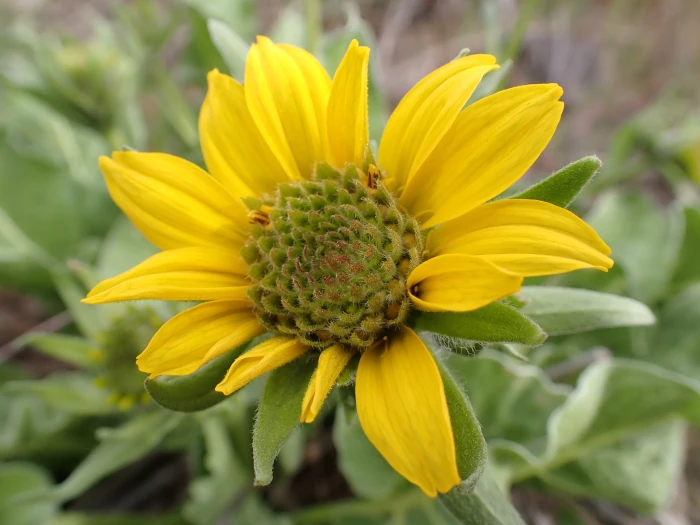Carey’s Balsamroot
(Balsamorhiza careyana)
Carey’s Balsamroot (Balsamorhiza careyana)
/
/

elik03
CC BY 4.0
Image By:
elik03
Recorded By:
Copyright:
CC BY 4.0
Copyright Notice:
Photo by: elik03 | License Type: CC BY 4.0 | License URL: http://creativecommons.org/licenses/by/4.0/ | Rights Holder: elik03 | Publisher: iNaturalist | Date Created: 2024-03-22T10:31:27-07:00 |
























Estimated Native Range
Climate Requirements for Tampa, Florida
| This Plant | Your Site | Plant Suitability for Your Location | ||
|---|---|---|---|---|
| • Precipitation | 7" - 94" | 50" | Aquatic | Aquatic |
| • High Temp. | 64°F - 94°F | 91°F | Your summer temperatures are normal for this plant. | Excellent |
| • Low Temp. | 11°F - 34°F | 50°F | OK, but your winter temperatures are warmer than normal for this plant | OK |
This plant may not grow well at your location - your precipitation is too high.
Summary
Balsamorhiza careyana, commonly known as Carey’s Balsamroot, is a perennial herb native to the dry grasslands and open forests in the Pacific Northwest, specifically Washington and Oregon, often found east of the Cascades. It typically grows to a height of 12 to 30 inches (30 to 76 cm). Carey’s Balsamroot is characterized by its rough, hairy leaves that resemble sandpaper and its bright yellow, daisy-like flowers that bloom in the spring and early summer. The flowers are quite showy and attract a variety of pollinators.
Carey’s Balsamroot is valued for its drought tolerance and ability to thrive in poor soil conditions, making it a suitable choice for xeriscaping and naturalistic plantings. It is also used in restoration projects to stabilize soils and support native ecosystems. In cultivation, it requires minimal maintenance once established. This plant prefers full sun and well-drained soils, and it is adapted to survive with low water once established. There are no widely known cultivars of this species, and it is not typically associated with significant disease or pest problems. However, it is important to avoid overwatering, as this can lead to root rot.CC BY-SA 4.0
Carey’s Balsamroot is valued for its drought tolerance and ability to thrive in poor soil conditions, making it a suitable choice for xeriscaping and naturalistic plantings. It is also used in restoration projects to stabilize soils and support native ecosystems. In cultivation, it requires minimal maintenance once established. This plant prefers full sun and well-drained soils, and it is adapted to survive with low water once established. There are no widely known cultivars of this species, and it is not typically associated with significant disease or pest problems. However, it is important to avoid overwatering, as this can lead to root rot.CC BY-SA 4.0
Plant Description
- Plant Type: Herb
- Height: 1-3 feet
- Width: 1-2 feet
- Growth Rate: Moderate
- Flower Color: Yellow
- Flowering Season: Spring, Summer
- Leaf Retention: Deciduous
Growth Requirements
- Sun: Full Sun, Part Shade
- Water: Low
- Drainage: Fast, Medium
Common Uses
Bee Garden, Deer Resistant, Drought Tolerant, Low Maintenance
Natural Habitat
Dry grasslands and open forests east of the Cascades
Other Names
Common Names: Intermediate Balsamroot, Carey Balsamroot
Scientific Names: Balsamorhiza careyana, Balsamorhiza careyana var. careyana, Balsamorhiza careyana var. intermedia
GBIF Accepted Name: Balsamorhiza careyana